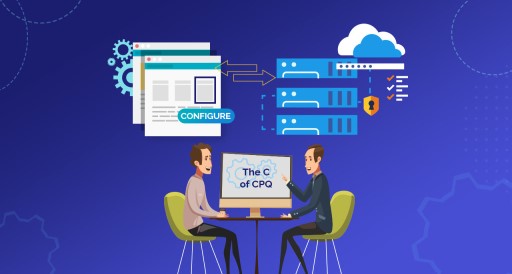Among the core processes and problems of Configure-Price-Quote, configuration-related problems tend to be the most complex. Product modeling has been one of the earliest applications of Artificial Intelligence due to its complex nature. The history of the challenges and evolution of configuration systems from simple rule-based systems to knowledge-based systems is an interesting read in itself. The earliest versions of configuration systems revolved around solving the problems of
- reducing invalid configurations
- mass customization of the products
- the maintenance involved in product operations.
A product configuration or a bundle consists of a set of components, attributes and a set of constraints that need to enforce the validity of the product configuration. All the current industry-leading CPQ systems support the set up of the product configurations using components, attributes, and constraints through the terminology and way they evaluate the constraints that might differ.
Below are the set of users usually involved in the configuration setup & process.
- The product managers/marketing teams that define the product configurations/packages/bundles.
- The operations team setting up and maintaining the bundles’ rules through the product life cycle
- The sales user or sales engineer who actually configures the product as part of the quoting process.
Let’s look at some of the questions that would help us in defining the product configurations for sales in a better way.
- What should constitute the base package of a product configuration that acts as a starting point with the required defaults? Assess this well as you may have different starting points of the base package based on the type of customer, industry etc and improve these starting points continuously
- Should you create a different base package or manage the variations through rules? Look for an answer that balances the impacts of sales experience, operations maintenance, and future product configuration needs.
- What are the driving points for the add-ons offered as part of product configurations? Current CPQ systems would need you set these and manage these manually today as part of a bundle or static recommendations instead of closing this loop automatically through recommender systems that work well for the B2C industry.
- Are there too many variations of the product that would cause confusion than ease the sales process? Look at the reasons why you are creating these variations and if the reasons are not to sell more and efficiently, those variations need to re-looked at. Never let the systems and operations negatively impact the sales ability to find the right product/solution easily.
- How do I find top selling/industry-specific solutions and Is it worth to create separate packages for these to improve the sales? This is another area where current B2C recommender systems can solve the problem to some extent by closing the feedback loop to create the top-selling solutions automatically.
- Do you have the context of the type of user in mind when designing the user experience? How is the user experience going to be in terms of finding the right solution, right alternatives, up-sell/cross-sells, configuring the solution, etc? This also largely depends on the CPQ system that you select and most of them today have limited options to deal with personalization.
please share the challenges you have faced when defining or maintaining product configurations for your company.
Blog Post by Sudha Krishna Sunkavalli Vice President, Cloud Solutions at Forsys Inc, Quote to Cash Processes & Solutions

